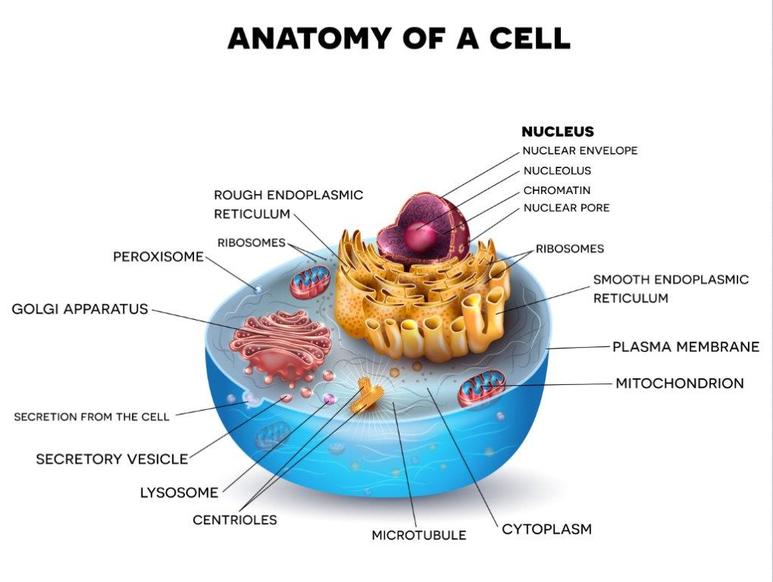Subtopic 2.1: Structure of a cell
Cells are the smallest unit of life. A typical eukaryotic cell and it components are illustrated in the next figure.
Membrane: Plasma membrane, nuclear envelope, and membranes provide separation of different environments to permit a variety of biological functions. Membranes are dynamic and fluid structures that allow selective movement of ions, energy sources, vitamins and cofactors, and waste. Membrane components include lipid, carbohydrates and protein molecules. Membrane fluidity is very important for its functions and, as a consequence, is important in disease processes, as well as, treatments.
|
Membranes are composed of lipids arranged in a lipid bilayer, with the hydrophilic glycerol and phosphate “head” groups of the lipid molecules forming the two outside layers and the hydrophobic “tail” groups arranged inside. Proteins are the second major part of biological membranes and make up approximately 20%–80% of both the structural and functional components of these membranes. Many of these proteins are embedded into the membrane and stick out on both sides; these are called transmembrane proteins. |






